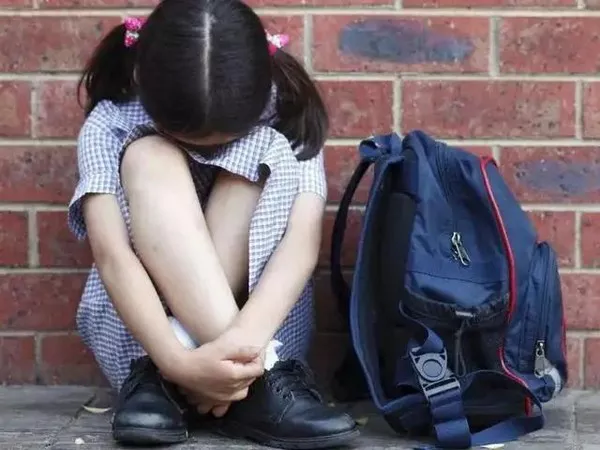Friendships play a crucial role in our lives, offering emotional support, companionship, and shared experiences. However, friendships, like any other relationship, can sometimes fade or break apart due to misunderstandings, life changes, or growing differences. The good news is that many lost friendships can be revived with effort, communication, and the right mindset. As a psychologist, I often see individuals navigating the complexities of lost friendships, and the process of reconnecting can be both emotionally fulfilling and deeply rewarding.
In this article, we’ll explore effective strategies for rekindling lost friendships and how to approach the process with empathy and care.
Understanding Why Friendships Are Lost
Before diving into the steps for rekindling a friendship, it’s important to first understand why friendships are lost in the first place. Several factors can lead to a friendship dissolving, including:
Misunderstandings or conflicts: Disagreements that remain unresolved can lead to feelings of resentment or distance.
Life changes: Major life events like moving to a new city, changing jobs, or entering new relationships can cause friends to drift apart.
Lack of communication: Over time, people may stop reaching out or checking in with one another, leading to a natural decay of the relationship.
Personal growth or differences: Sometimes, friends grow in different directions and no longer feel aligned with one another’s values, interests, or priorities.
Whatever the reason, it’s important to acknowledge that relationships evolve over time. Even if a friendship has been lost, it doesn’t mean that it can’t be regained. However, understanding the root cause of the distance can help inform your approach to rebuilding the connection.
Reflect on the Friendship
The first step in reviving a lost friendship is to reflect on the relationship itself. Consider the following questions:
- What did the friendship mean to you?
- Why did the friendship fade or end?
- Were there any unresolved issues or conflicts that led to the distance?
- Have you changed or grown since the friendship ended, and how might that impact the dynamic now?
Taking the time to reflect on these questions will give you a clearer sense of your motivations for rekindling the friendship and whether it’s worth pursuing. It’s essential to enter the process with the right intentions—namely, a desire to reconnect based on mutual respect and shared values, rather than guilt or nostalgia alone.
Assessing Whether to Reconnect
Not all friendships are meant to be rekindled, and it’s important to assess whether reaching out to your former friend is the right decision for both of you. Some friendships end because they were toxic or unhealthy, and reviving them may do more harm than good.
Before reaching out, consider:
Was the friendship mutually supportive and healthy? If the relationship was characterized by one-sidedness, manipulation, or other harmful dynamics, it may be better to move on.
Has enough time passed to heal any old wounds? If the friendship ended due to conflict, it’s important to assess whether both parties have had enough time to process and heal from the disagreement.
Do you genuinely miss the person, or are you driven by guilt or obligation? Ensure that your desire to reconnect comes from a place of wanting to rebuild a meaningful connection, not out of a sense of duty or guilt.
If, after reflection, you feel that the friendship was positive and worth rekindling, and if enough time has passed for healing, then it may be a good time to take the next step.
Making the First Move
Reaching out to a former friend can feel daunting, especially if you’re unsure how they’ll respond. However, taking the initiative to reconnect is an important step toward repairing the relationship. Here are a few tips on how to approach the situation:
1. Start with a Genuine Apology (If Necessary)
If the friendship ended due to a misunderstanding or conflict, it’s essential to acknowledge any role you may have played in the breakdown. Apologizing doesn’t mean taking all the blame, but it does show that you’re willing to take responsibility for your actions and are open to rebuilding the trust that was lost.
Keep the apology sincere and specific, acknowledging the situation that led to the end of the friendship. For example:
“I’ve been thinking a lot about our last conversation, and I realize I didn’t handle it well. I’m really sorry if my words hurt you.”
“I regret not staying in touch after you moved away. I know life got busy, but I value our friendship and would love to reconnect.”
By offering a heartfelt apology, you show vulnerability and demonstrate your desire to mend any rifts in the relationship.
See Also: How to Differentiate Friendship and Love?
2. Be Honest About Your Intentions
When reaching out, be clear about your intentions for reconnecting. Whether you’re looking to rebuild the friendship from where it left off or simply hoping to catch up
, honesty is key. Let your friend know why you’re reaching out and what you hope to achieve:
“I’ve missed our friendship and was hoping we could catch up and see where things stand.”
“I’ve been thinking about you lately and realized how much I valued our time together. I’d love to reconnect if you’re open to it.”
By being open and transparent, you allow the other person to understand your motivations and decide whether they feel the same way.
3. Give Them Space to Respond
Once you’ve reached out, it’s important to give the other person space to process and respond in their own time. They may need to reflect on the relationship or their own feelings before replying. Be patient and avoid putting pressure on them to respond immediately or in a certain way.
It’s also possible that your former friend may not be ready to rekindle the friendship, and that’s okay. Respect their boundaries and understand that not all relationships can or should be revived.
Rebuilding the Friendship
If your former friend is open to reconnecting, the next step is to slowly rebuild the relationship. Rebuilding a lost friendship requires time, effort, and patience. Here are some ways to nurture the connection:
1. Start Slow
Rather than trying to pick up exactly where you left off, take the time to get to know each other again. People change over time, and both you and your friend may have evolved since the friendship ended. Start with casual conversations or meetups to rebuild trust and comfort.
Grab a coffee together and catch up on life updates.
Reconnect over shared interests, such as attending a concert or participating in a hobby you both enjoy.
2. Acknowledge the Past, But Focus on the Present
While it’s important to address any unresolved issues that may have led to the loss of the friendship, don’t dwell on the past. Once you’ve both had an opportunity to clear the air, focus on rebuilding a new connection based on your current lives, experiences, and interests.
Forgiveness is essential here—holding onto old grievances will only hinder the process of moving forward.
3. Invest in the Relationship
A revived friendship requires effort and commitment. Make a conscious effort to stay in touch, plan activities together, and show up for your friend when they need support. Meaningful friendships are built on consistency and trust, so be intentional about maintaining the connection.
Set aside regular time to check in with one another.
Celebrate each other’s successes and provide emotional support during difficult times.
Conclusion
Rekindling a lost friendship can be an incredibly rewarding experience, allowing you to rediscover the joy of connection and shared memories. However, it’s important to approach the process with patience, empathy, and an open heart. Not all friendships can be revived, but for those that can, the effort is often worth it.
By reflecting on the past, making a sincere effort to reach out, and rebuilding trust through mutual respect, you can bring a lost friendship back to life and enjoy the benefits of a renewed bond.
Related topics:

























